Exercise 10. Agree or disagree with the statements. Correct the false statements
Agreement: I agree with you; You are right; Certainly; Exactly so ; I fully support you
Disagreement: I can’t agree with you; I am afraid you are mistaken; Not quite so; This is not true; I disagree with the statement that…
- A tradition of "colory theory" began in the 16th century.
- Red, yellow and blue were believed capable of mixing all other colors.
- The most important problem has been confusion between the behavior of additive and subtractive colors.
- "Colors" such as browns or ochre can appear in mixtures of light.
- Any three real "primary" colors of light, paint or ink can mix only a limited range of colors.
Exercise 11. Answer the questions:
1. What is color theory?
2. When did color theory principles first appear?
3. What does color theory has superficial reference to?
4. What is RYB?
5. What are “pure” colors characterized by?
6. What are the most important problems in color theory?
7. What colors in reality can mix all possible colors? How are they defined?
V. Oral practice.
Exercise 12. Be ready to speak on the topic “Color theory”. Use the plan to be ready.
- The definition of color theory.
- History of appearance of color theory.
- The most important problems in color theory.
VI Reading and Comprehension
Exercise 13. Look through the text B.
Notes:
1.equilibrium – рівновага
2.value - поєднання
Text B What is Color Harmony?
Harmony is nature’s way of saying that two or more things together make sense. Color harmony represents a satisfying balance or unity of colors. Combinations of colors that exist in harmony are pleasing to the eye. The human brain distinguishes the visual interest and the sense of order created by the harmony and forms a dynamic equilibrium.
Experts have specific ideas based on the principles of color theory and color psychology of color combinations that are aesthetically appealing and pleasant. The color wheel becomes the designer’s tool for creating the harmonies. Once you have a harmony in mind you will then use your a fan guide, or online tool that shows the hundreds or maybe even thousands of colors you have to choose from.
Creating Color Harmony
The basic formulas for creating harmony are described and illustrated on the designer’s color wheel. This section focuses on understanding color relationships and how to develop a finished palette that is pleasing to the eye. Successful color schemes rely on your knowledge of hue, value and chroma. We have all heard someone say “those colors clash” or ‘don’t work together.’
Color Harmonies
Monochromaticharmonyuses various values (tints, tones, and shades) within the same color family.
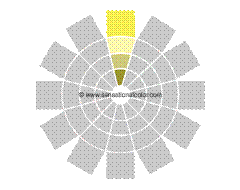
Analogousharmonies are based on three or more colors that sit side-by-side on the color wheel.
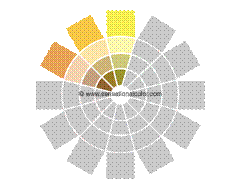 | 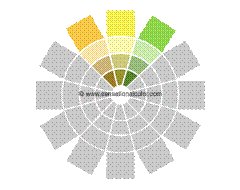 | 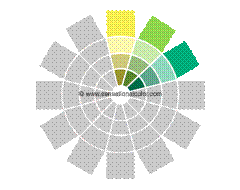 |
Complementary colors (or Direct Complementary) are those that appear opposite each other on the color wheel.
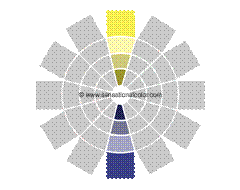
A split-complementarycolor arrangement results from one color paired with two colors on either side of the original color’s direct complement creating a scheme containing three colors.
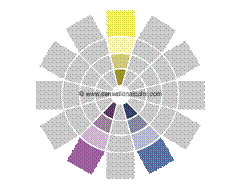
Double complement harmonies include two sets of complementary colors that sit next to and across from each other on the color wheel forming an X.
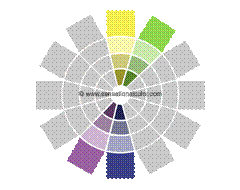
Tetrad combinations are made up of four hues equal distance from one another, forming a square or rectangle on the color wheel.
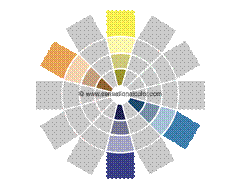 | 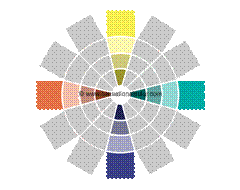 | 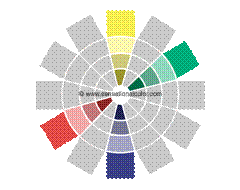 |
Diad schemes are combinations of two colors located two steps apart on the color wheel, skipping the color in between.
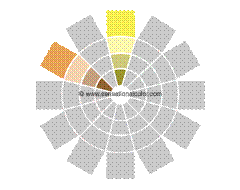 | 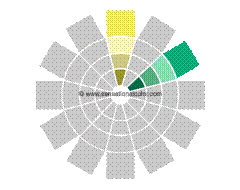 |
Triad colors are three colors equally spaced from one another, creating an equilateral triangle on the color wheel.
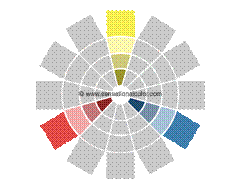
Use color harmonies along with hue, value, and chroma to develop your color schemes. Color can come first or last in the design process. Some designers prefer to choose each color, identifying the color harmony and color description, and then find the other elements for their design. Other designers will do just the opposite and create their color plan by responding to an inspiration or another element of design.
VII Language
Exercise 14. Match painting media in column A to their definitions in column B:
| A | B |
| 1.Monochromaticharmony 2. Analogous harmony 3. Complementary colors 4. Split-complementary colors 5. Double complement harmonies 6. Tetrad combinations 7. Diad schemes 8. Triad colors | a. include two sets of complementary colors sitting next to and across from each other on the color wheel forming an X. b. are based on three or more colors sitting side-by-side on the color wheel. d. are made up of four hues equal distance from one another, forming a square or rectangle on the color wheel. e. are those that appear opposite each other on the color wheel. f. result from one color paired with two colors on either side of the original color’s direct complement creating a scheme containing three colors. g. are three colors equally spaced from one another, creating an equilateral triangle on the color wheel. h. are combinations of two colors located two steps apart on the color wheel, skipping the color in between. i. uses various values within the same color family. |
VIII Text understanding
Exercise 15. Answer the questions:
